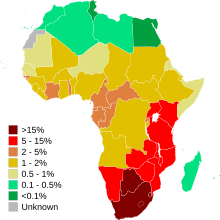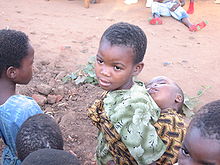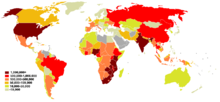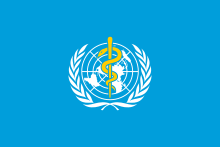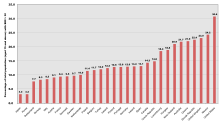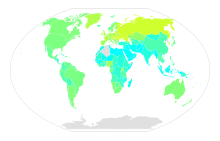Sociology of health and illness
As a field of study it is interested in all aspects of life, including contemporary as well as historical influences, that impact and alter health and wellbeing.
These influences may include location of upbringing, how illness is understood and framed by immediate community members, or the impact that technology has on health.
This biomedical model is viewed as not holistically placing humans within the wider social, cultural, economic, political, and environmental contexts that play a large part in how health and wellbeing are deprived, maintained, or improved.
One of the founders of the sociology of health and illness is Talcott Parsons, an American sociologist, who analyzed the relationship between patients and their doctors in his book The Social System written in 1951.
Those who were sick deviated from social roles were unable to fulfill their respective functions, thus if too many people claimed to be ill, this would create a dysfunctional society that needed regulating.
[12] Good health was thought to reduce the risk of spiritual defilement and therefore enhanced the social status of the ruling class who saw themselves as the beacon of civilization.
[12] Focusing on preventing the spread of diseases such as small pox lead to a smaller mortality rate in much of the western world.
[12] Other factors that allowed the modern rise in population include: better nutrition and environmental reforms (such as getting clean water supplies).
[15] A few state interventions include maintaining clean towns, enforcing quarantines during epidemics and supervising sewer systems.
[16] In the 1980s the Black Report, published in the United Kingdom, went against this view and argued that the true root of the problem was material deprivation.
It has also been found that heredity has more of a bearing on health than social environment, but research has also proved that there is indeed a positive correlation between socioeconomic inequalities and illness.
Decreasing career advancement opportunities and major imbalances in control over work have been coupled with various negative health costs.
Having to provide care for their parents, the children also miss out on an education which increases the risk of teen pregnancy and people affected with HIV.
The fact that this age range is when adults acquire most of their income means they often cannot afford to send their children to school due to the high medication costs.
These problems are influenced by the sociological factors of religion or belief systems, attempts to reconcile traditional medicinal practices with modern professionalism, and the economic status of the inhabitants of Asia.
Even early globalization has added to this problem – Chinese influence made Vietnam a Confucian society, in which women are of less importance than men.
Many traditional healing practices include shamanism and herbal medicines, and may have been passed down orally in small groups or even institutionalized and professionalized.
For example, in Pakistan, decisions concerning pregnancy and antenatal care (ANC) are usually made by older women, often the pregnant woman's mother-in-law, while the mother and father to be are distanced from the process.
[28] The elderly have been traditionally well respected and well cared for in most Asian cultures; experts predict that younger generations in the future are less likely to be concerned and involved in the health care of their older relatives due to various factors such as women joining the workforce more, the separation of families because of urbanization or migration, and the proliferation of Western ideals such as individualism.
While indigenous medicinal beliefs are not significantly prevalent in Australia, traditional ideas are still influential in the health care problems in many of the islands of the Pacific.
In the 1960s and 1970s it was recognized that Australia had several hundred thousand alcoholics and prevention became a priority over cures, as there was a societal consensus that treatments are generally ineffective.
[30] The government began passing laws attempting to curb alcohol consumption but consistently met opposition from the wine-making regions of southern Australia.
European colonization and late independence meant modernization but also slow economic growth, which had an enormous effect on health care, particularly on nutrition in the Pacific Islands.
While more prosperous, urban areas could afford food, they chose poor diets, causing 'overnourishment', and leading to extremely high levels of obesity, type 2 diabetes, and cardiovascular diseases.
North America is known for being a leading nation in regards to industrialization and modernization, but the United States lacks federal laws regarding health care as a basic human right.
[36] A main reason is that a lower- and middle-class population still exists in plentiful numbers, maintaining a group that is highly vulnerable to physical ailment.
In April 2009, during the early days of the outbreak, a molecular biologist named Dr. Henry Miller wrote in the Wall Street Journal about New York City high-school students.
These cross-species infections occur most commonly when people are close to large numbers of pigs, such as in barns, livestock exhibits at fairs, and slaughterhouses.
Symptoms of this disorder are: high fever, chills, sweating, headaches, body aches, weakness, vomiting and diarrhea.
[39] The first sign of Hepatitis D was detected in 1978 when a strange and unrecognizable internuclear antigen was discovered during a liver biopsy of several Italians who developed HBV infections.

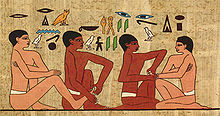
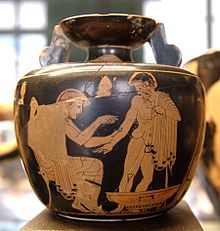

|
>80
77.5–80
75–77.5
72.5–75
70–72.5
|
67.5–70
65–67.5
60–65
55–60
50–55
|
